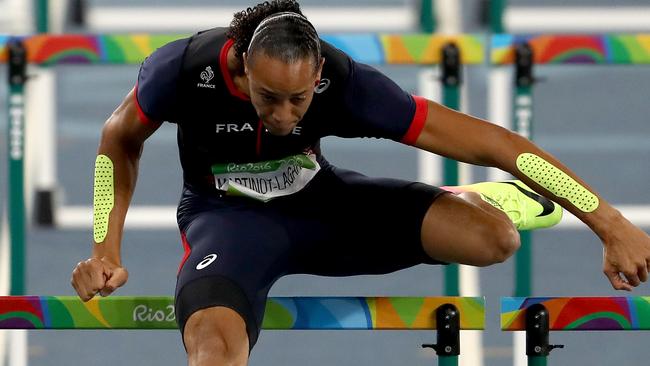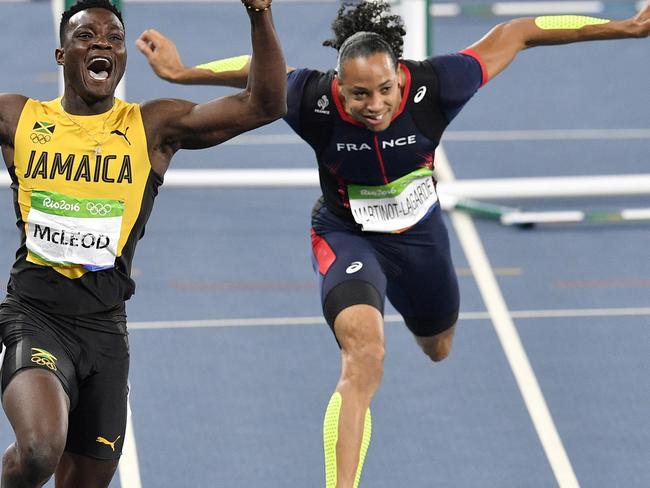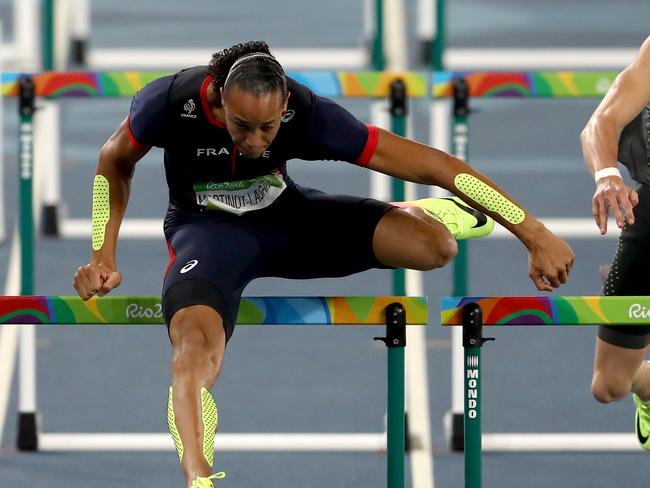Pascal Martinot-Lagarde had some extra help when competing
FRENCH hurdler Pascal Martinot-Lagarde drew attention to himself with an unusual get-up on the track at the Rio Olympics.

FRANCE’S Pascal Martinot-Lagarde will run in the final of the 110m hurdles in Rio, and he has something special to thank for getting him there.
He clocked a time of 13.25 seconds in his semi-final, which was good enough for second behind 22-year-old Jamaican Omar McLeod.
With athletes only getting one chance to show off on the world’s biggest stage every four years, they’ll do anything to gain even the slightest advantage.
You only had to look at Martinot-Lagarde to understand that. With bright yellow strips on his legs and arms, he was hard to miss.
A similar sort of fluoro tape has made its way into the sporting realm in recent years — it’s not uncommon to see it on rugby league players every weekend — but this was something else entirely.
The Frenchman was wearing one of Nike’s latest innovations, designed to help runners shave off every millisecond possible from their race times.
Basically, it’s an adhesive tape with silicon-based spikes — called AeroBlades — that is supposed to reduce wind resistance.
France's Martinot-Lagarde just wore tape w/silicon blades to cut aerodynamic drag in 110m hurdles, made by Nike pic.twitter.com/vgDIPlewfG
— Darren Rovell (@darrenrovell) August 17, 2016



According to an article by ESPN’s Darren Rovell in June this year, the distance between the spikes on the tape differs depending on what part of the body you want to wear it.
Nike used a 3D printer to test various prototypes in a wind tunnel to finalise the design that would cut down on drag the best.
“We were tasked to combat the enemy of fast and deliver on the athlete’s desire to look fast, feel fast and be fast,” Nike’s vice president and creative director for categories and concepts Martin Lotti said at the product’s launch.
Athletes’ attire has been focused on as much as their performances in Rio. The Egyptian women’s beach volleyball pairing of Doaa Elghobashy and Nada Meawad wore leggings and long sleeves, while Elghobashy also wore a headscarf compared to the bikinis worn by their competitors.
The Dutch team also made people think twice when Marleen Van Iersel and Madelein Meppelink stepped onto the sand in bodysuits under their bikinis. Some media outlets reported they made that decision to deal with cooler weather after it had been raining in Rio.



